Le Fraghe, Bardolino
- Mike
- Sep 8, 2021
- 11 min read
Updated: Dec 12, 2024

I’ve always liked a well made Bardolino for the same reason that I used to drink Fleurie or Juliénas or Chiroubles or some of the other ten crus of Beaujolais. Because just like those French wines, Bardolino can be the perfect summer red wine with no tannin to speak of, good acidity and appealing red fruit flavors, an ideal match for many simpler summer dishes when chilled a little before serving.
The predominant grape of Bardolino is Corvina, the same as in Valpolicella a little further east. On the glacial soils of the hills between Lago di Garda and the Adige river this grape produces a much lighter wine than in Valpolicella with a flavor profile of tart cherries, herbs and a little spice. Bardolino wine has never had a particularly good reputation because when the production zone expanded decades ago into the flatter lands towards the lake, quality declined. But up in the hills in the traditional Classico zone there have always been some producers making Bardolino the way it should be made and foremost among those is Matilde Poggi, the owner and winemaker at Le Fraghe.
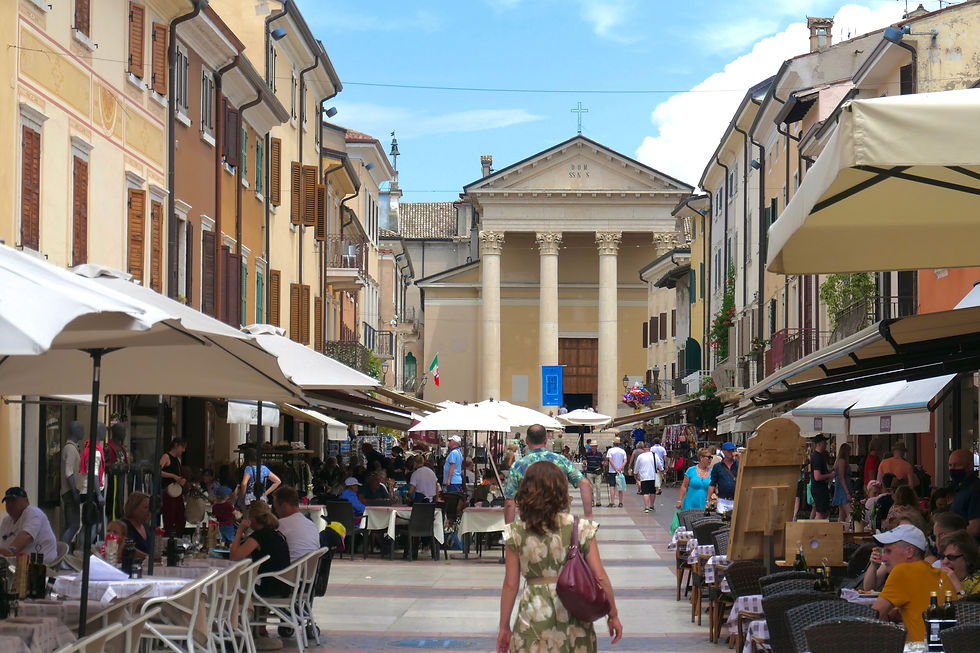
I’m not sure why it took us so long to stumble on Le Fraghe because it is hardly unknown or undiscovered and Matilde has been making wine here to great acclaim for 37 years. In the last 15 years many of her wines have found enthusiastic buyers in the US and elsewhere, and the Wine Society in England is a regular buyer of her Bardolino. In fact it was seeing her wine on the Wine Society list that prompted our visit because I’ve been a member of the Wine Society for 43 years and know how knowledgeable their buyers are and how diligent they are about selecting wines to sell to their members all across the UK.
One of the pleasing developments in Italian wines in recent years has been a return to purity and simplicity in winemaking, starting with completely organic practices in the vineyard followed by a minimalist approach in the cellar. In many countries elegant and more balanced wines at last seem to be winning the battle against the decades long fashion for an over-extracted, riper and more fruit forward style.
Traditional winemakers like Matilde are perhaps now back in fashion as their philosophy becomes validated by a wider audience of wiser and more mature wine drinkers. Let’s hope so because these are the sort of wines that we gravitate towards and that come from a common philosophy shared with other winemakers we have written about at Bisson, Monte Bernardi, Pascale Francesca, La Torre alle Tolfe and others.

Le Fraghe’s 70 acres of vineyards are mostly located in the Bardolino Classico zone at about 600 feet of elevation near the small towns of Cavaion Veronese and Affi, close to where marmo rosso veronese is excavated, the red coloring of this marble being due to the high iron content of the soil here. This is the hilly, more inland and northern part of Bardolino and will soon be officially classified as being in the Montebaldo sub-zone, one of the three recently approved crus of Bardolino. But to actually put that on the label starting in 2021 will require conformity with the various grape percentages and yields per hectare included in the new cru regulations.
Matilde’s story is similar to many others we have come across in both wine and olive oil in Italy, where a young person with drive and curiosity is determined to do more with their family property than just follow the easy path of continuing to sell their harvest in bulk. In Matilde's case the family vineyards had been farmed for about a century and the grapes vinified as family wine until she came along. It’s a simple story for us to tell but a much harder story to actually live because it always involves many years of hard work, experimentation and learning through your mistakes.
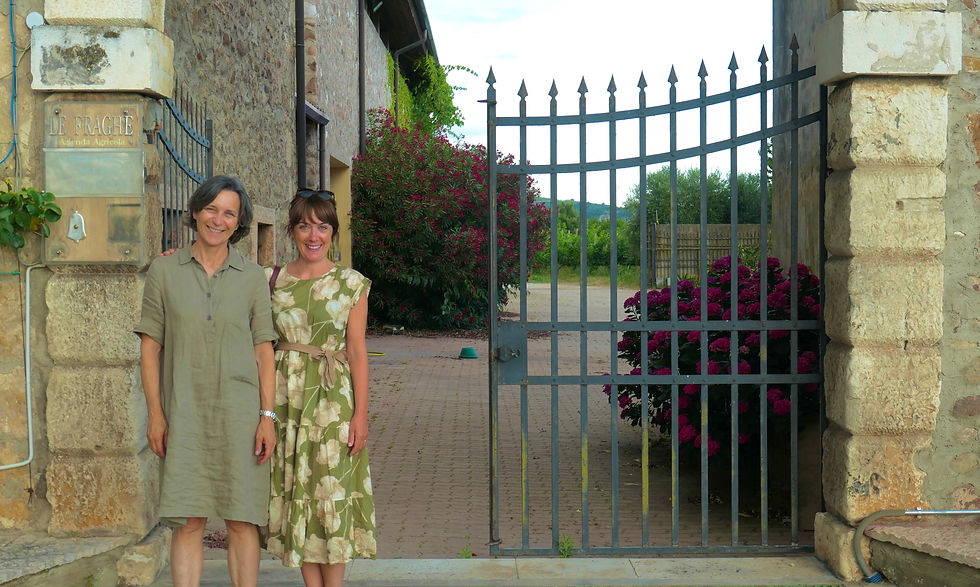
But when you multiply these individual stories of Matilde, or Angelo di Blasi at the start of his journey with Rodyum, across the whole of Italy you begin to appreciate how much the wine and olive oil in Italy has improved. Much of the bulk produce that a generation ago was primarily for domestic consumption and often quite ordinary has now become very high quality wine and olive oil, uniquely Italian and admired and consumed around the world.
Coming of age in England in the 1970s I grew up with French food and wine being dominant, with Italian produce mostly ignored and it was also at that time that the wine made from the purchase of grapes in bulk was one of the main factors contributing to the poor international reputation of Italian wine. All of that has now changed through the individual efforts of people like Matilde over the last few decades; now is an exciting time to live in Italy and witness these efforts come to fruition and Italian wine begin to reach its true potential.
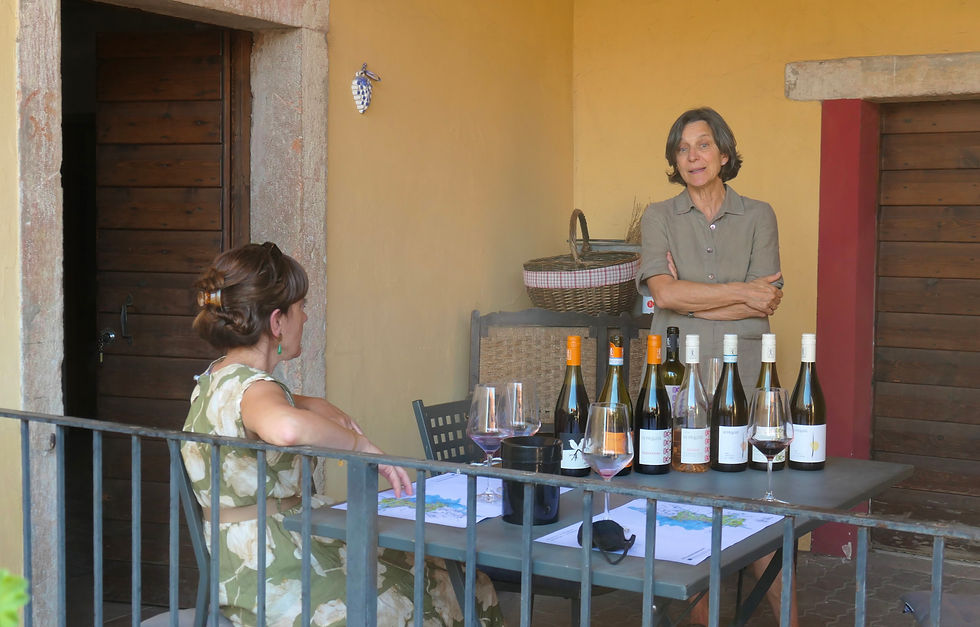
The full range of wines at Le Fraghe incudes two Bardolino red wines, one of which is mostly from the Classico zone but the main reason for it not being labeled as Classico is the screw top she uses instead of the traditional cork.
The regulations need to catch up with her rather than the other way round because there are several good reasons for using a screw cap (preserving freshness and eliminating the risk of any oxidation being the primary ones) and no good reasons for using cork on a wine meant to be consumed young. Her second Bardolino is a Classico from a single vineyard called Brol.
She also has a completely unique 100% Rondinella IGT red wine, Rondinella typically being the second or third grape in the blend for both Bardolino and Valpolicella. Matilde doesn’t believe that anyone else has made a Rondinella in purezza and we certainly have not come across one before.
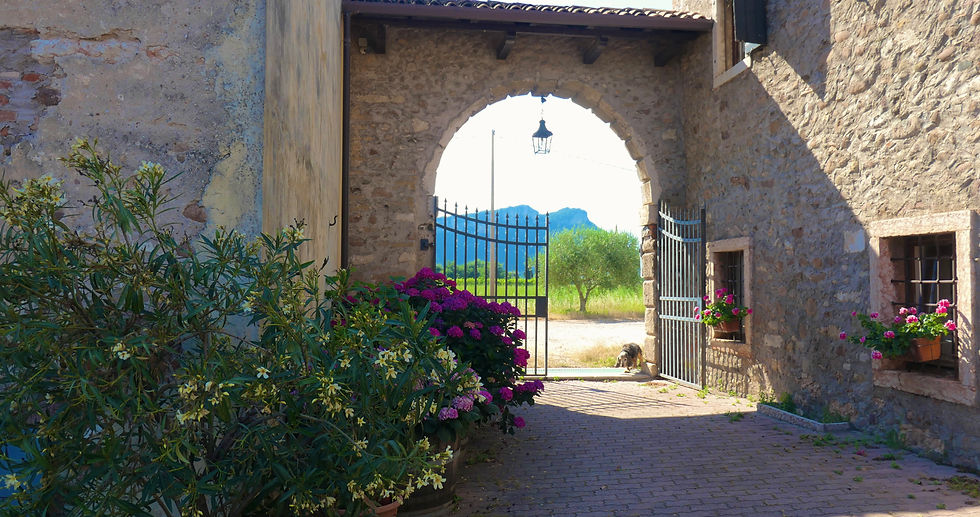
She makes two really fabulous Chiaretto di Bardolino DOC wines, one called Rōdon and the other called Traccia di Rosa, both of which will change a lot of minds of those people who say they don’t really like rosé wines and also those who haven’t got passed Provençal rosé. Finally there are two white wines, both 100% Garganega, which is the main grape of nearby Soave.
Le Fraghe has been completely organic and certified as such since 2009 and Matilde prefers to work with fewer grapes than those permitted under the DOC regulations, using 80% Corvina and 20% Rondinella for her Bardolino wines. This is the best combination from her vineyards and the result of all her years of experience working with the local grapes in the particular micro climate of this area up in the hills. The cherry and blackberry notes all come from the Corvina along with low tannins and she keeps the yields of these grapes quite low at 9 tonnes per hectare which is 10% below even the recently reduced maximums for the new cru of Montebaldo.
In the cellar Matilde employs a thermal shock (like Bisson in Liguria) to the newly harvested grapes, chilling them down to 3 degrees celsius. She uses mostly stainless steel, indigenous yeasts and avoids malolactic conversion for her white wines but like all of the interesting winemakers we write about, she continues to learn and experiment and she now has concrete containers in the cellar for the Brol Grande Bardolino and the two Traccio wines.
She has also recently acquired two terracotta amphora vessels. Both concrete and amphora have the benefit of being marginally porous allowing a small amount of oxygen to penetrate while being completely inert in terms of flavor.
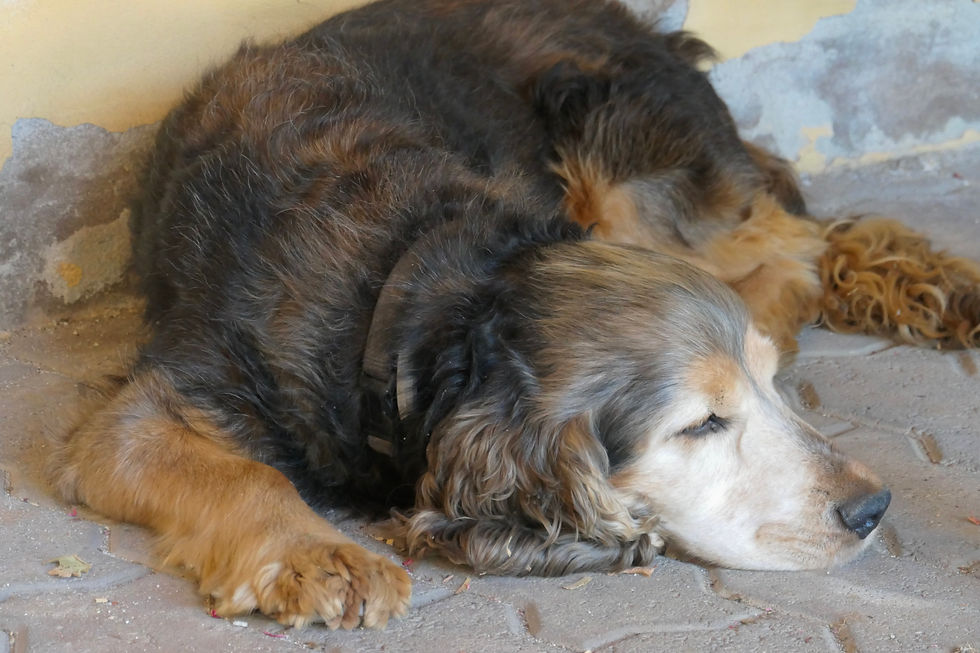
Matilde works out of a very atmospheric 15th century farmhouse surrounded by her vineyards, with her faithful dog Bardo by her side. Superficially it has the look and charm of a winery from a century ago but stepping into the cavernous fermentation and aging room you realize that this is a very modern and efficient operation producing 150,000 bottles of wine a year.
In 2013 Matilde was elected President of the Italian Federation of Independent Winegrowers (FIVI) which now has over 600 members and is loosely affiliated to similar bodies in other European countries. Members are easily identified by the symbol on the foil wrap on the neck of their bottles with the inscription 'Vignaioli Indipendenti'.

Their goal is to promote the quality and authenticity of Italian wine and to demonstrate the provenance of a bottle of wine where the entire process from vineyard to bottle takes place on the same estate.
Their challenge is to prevent the industrialization and mischaracterization of Italian wine by multinational corporations and consolidators, with their powerful lobbyists in both Rome and Brussels, and in doing so prevent wine production suffering the same fate as many small scale producers in the Italian olive oil industry, where provenance and disclosure have become a minefield for consumers.
FIVI winegrowers cultivate their own vines, bottle their own wines, do not purchase grapes commercially and are responsible for selling their wines in bottle only and under their own name and label.
Tasting Notes:
Rōdon 2020 - Bardolino Chiaretto DOC (80% Corvina, 20% Rondinella)
(fermentation and aging on the lees in stainless steel until the Spring, 12.5% alcohol)
The Corvina and Rondinella are vinified separately with just 6-8 hours cool maceration on the skins for color.
Peach colored in the glass rather than pink it opens up on the nose with wild strawberries, white peach and aromatic herbs in the background. There’s some noticeable salinity on the palate which together with the natural acidity of the Corvina grape makes it pleasantly mouth watering and perfect with food. It’s completely dry with some pomegranate and even grapefruit flavors as well as lingering notes of herbs on the finish. We've had several rosato wines from the south of Italy this summer and many of them have been unexciting and not particularly refreshing. This Chiaretto and the two Traccia wines below stand out by comparison.
This is a more complex wine than the Chiaretto label often suggests to most people so give it a little time in the glass to open up and reveal itself. This has enough structure to pair very well with all sorts of lighter summer dishes whether fish, chicken or salads and with 45,000 bottles available every year you should be able to find a few wherever you live. Excellent value at just over 10 euros in Italy.

Le Fraghe 2020 - Bardolino DOC (80% Corvina, 20% Rondinella)
(fermentation and aging on the lees in stainless steel until the Spring, 12.5% alcohol)
As with the Chiaretto, the Corvina and Rondinella are vinified separately but the maceration here lasts for 7-8 days to extract the full color.
Matilde also practices délestage during the fermentation of the two red Bardolino wines which simply means separating (racking off) the fermenting wine juice from the solids every morning before reuniting them each evening. This aerates and oxygenates the wine and is the most effective way of reducing tannins and stabilizing the color, More importantly it increases the juice extraction and free run yield which reduces the need to press the solid matter at the end of the fermentation process, allowing a more gentle extraction of phenolic compounds.
The result of all of the above is a ruby red wine that is immediately recognizable as Bardolino with a powerful aroma of cherries and a little spice and cinnamon. It manages to stay light on its feet while still having lots of flavor and a long finish. Just the right amount of acidity keeps it fresh and when slightly cooled it’s juicy, elegant and refreshing. What more do you want in a summer red wine? And just like with the Chiaretto there’s 45,000 bottles looking for a home every year. Excellent value at just under 10 euros in Italy.
Brol Grande 2018 - Bardolino Classico DOC (80% Corvina, 20% Rondinella)
(fermentation and aging in concrete, 12.5% alcohol)
Same separate vinification, maceration and délestage as for the regular Bardolino bottling above. This wine will probably be the first one to be labeled under the new Montebaldo sub-zone for the 2021 harvest.
A lovely deep red but already with a pale, whitish rim around the glass. A full nose of blueberries and wild strawberries with a little black pepper and cinnamon. This is full and round and already fully mature in that the classic cherry flavor is entering a tertiary phase with some faint notes of stewed plums. This is a very different sort of Bardolino that we haven't really come across before and even if you don't like simple Bardolino you should really give this a try as it's much more subtle, complex and really quite a fascinating single vineyard wine with notable delicacy and finesse. At around 14 euros it's good value for what is a very elegant wine.
Chelidon Rondinella 2018 - Veneto IGT (100% Rondinella)
(fermentation and aging on the lees in stainless steel until the Spring, 12.5% alcohol)
Matilde gives some thought to her labels and thankfully (for those of us who struggled with Latin and missed Greek entirely) also provides an explanation. The grape Rondinella derives from the Italian word for the swallow, rondine, and the name of the wine, Chelidon, is the ancient Greek name for that bird. Being a classics scholar Elena understood that immediately, but for people like me there's also a helpful drawing of the bird on the label.
Light crimson color in the glass it's fruity and spicy with a touch of Bardolino on the nose. At three years old this seems fully mature. It's a lean, taught wine with very delicate, aromatic notes and restrained flavors, suggestive of pomegranate with notes of cinnamon and black pepper. It's always difficult trying to describe an unusual, and in this case, unique wine because there is no memory bank of flavors to fall back on. It's a light wine ideal for summer that I preferred ever so slightly chilled.
2nd evening: we rebottle most wines into half bottles for consumption the next evening, always full to the brim with no air inside, but still they tend to mimic how the wine will develop over time. Not scientific perhaps, but better than guesswork.
This Chelidon really stepped up to another level and I completely get what Matilde was aiming for here. The slightly austere, brooding character of the first night changed into a very elegant, ethereal wine. Extremely refined like an old Burgundy that I just wanted to sip after dinner. Very interesting wine and punching well above its weight at about 12 euros.
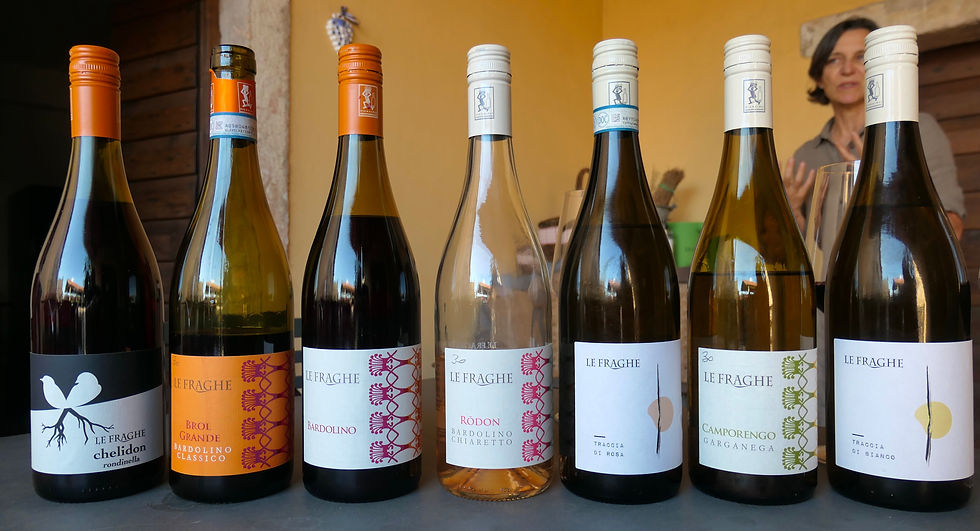
Camporengo Garganega 2019 - Veneto IGT (100% Garganega)
(fermentation and aging on the lees in stainless steel until the Spring, 12.5% alcohol)
The whole clusters are macerated briefly for about 12 hours and then pressed very softly with no destalking.
There's a full, heady nose of ripe fruit in the glass with mango and pear in particular. You can tell from the nose that this is a full, rich wine and on the palate there's immediate confirmation. There's lots of fruit and flavor here and it's slightly viscous but completely dry and never cloying. Good unobtrusive acidity in the background and it finishes clean and long.
Super wine for 10 euros.
The following two wines are both brand new, barely on the market and not even described yet on the Le Fraghe website. They represent a new interpretation of Matilde's best grapes from vineyards rich in iron content and they are both aged in concrete. These are zero sugar wines which she leaves unfiltered so don't be put off by a slight cloudiness in the glass. It's not a flaw but rather a sign of a natural nutrient rich wine.
Traccia di Bianco 2019 - Veneto IGT (100% Garganega) (13.5% alcohol)
Striking green gold color in the glass that transcends the slight cloudiness, this has a powerful citrusy aroma with just a hint of sweetness. More in the direction of grapefruit than mango on the nose and really quite pronounced and surprisingly complex. On the palate, just like the unfiltered Traccia di Rosa below, it's bracingly acidic and fuller and richer than many Garganega wines we've had (and we've had quite a few). This may not be everyone's cup of tea but for us this is a very refreshing summer wine that can pare well with lots of different foods with its palate cleansing acidity and it has plenty of depth and body for a Garganega wine. At 13.5% alcohol it would definitely be in the Superiore category if it was made in Soave where all its competitors are. At around 10 euros it's excellent value.
Traccia di Rosa 2019 - Bardolino Chiaretto DOC (80% Corvina, 20% Rondinella) (12.5% alcohol)
Very pale color, almost a white wine in appearance. This is a much leaner, more austere Chiaretto than the Ròdon and in fact I would mistake it for a white wine every time. There's a lovely softness on the nose with lemon and rose petals that belies the crisp acidity on the palate but it also has a fuller more rounded style with some real depth and notes of rosehip that make it floral but distinctly tart. A great addition to Matilde's portfolio of wines and another great value wine priced around 10 euros.








